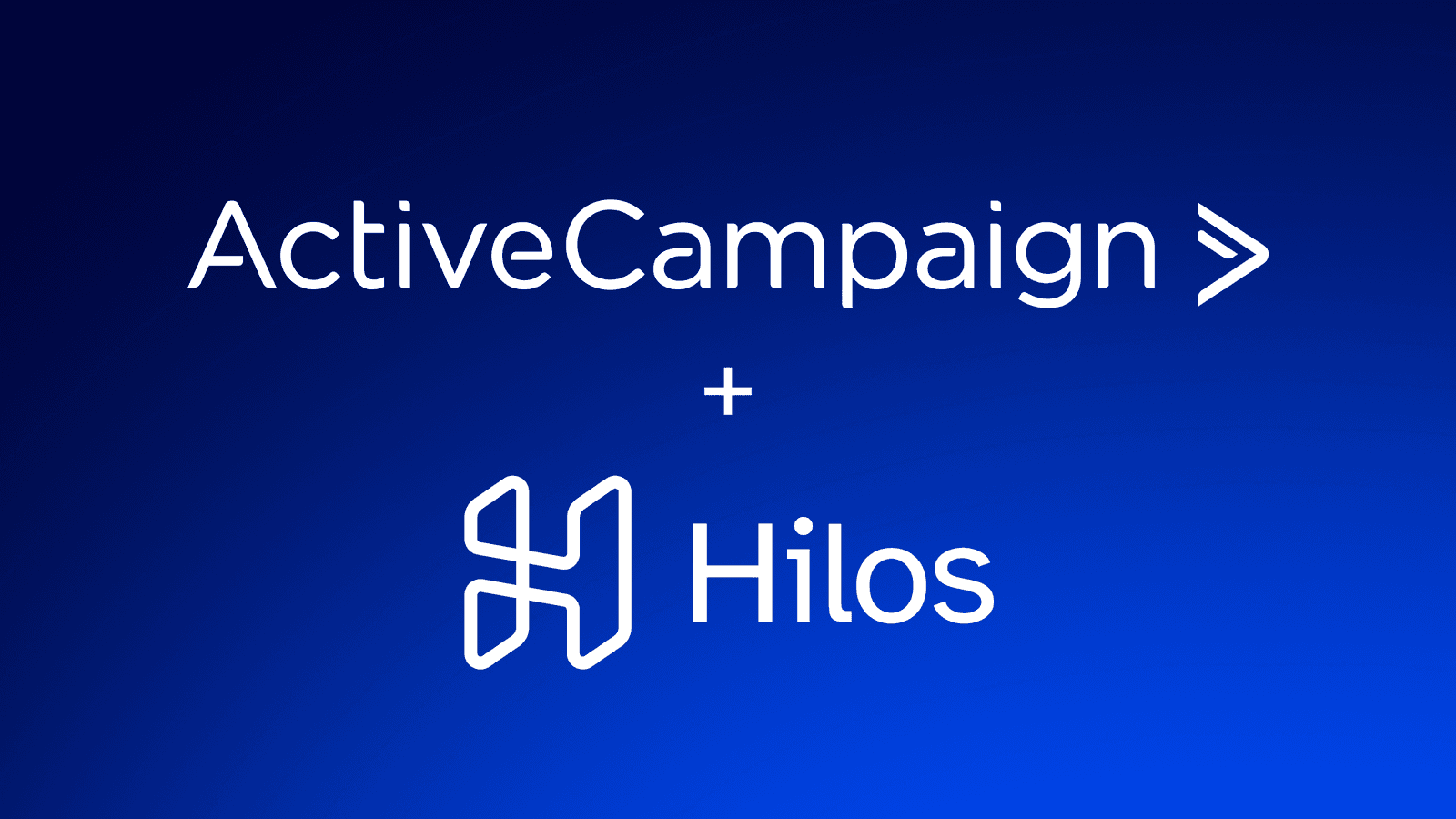What does successful content marketing look like?
If you run a small business, you’ve probably thought about content marketing at some point. How could you not? It seems like everyone everywhere is talking about it.
Seth Godin even declared that “content marketing is the only marketing left.”
And yet—it can be hard to do content marketing as a small business. It's hard to make content that makes money.
You might look up content marketing examples and come across Coca-Cola’s “Share a Coke” campaign. Or you might hear about how LEGO is amazing at doing content marketing through user-generated content.
Those examples are cool—and clearly effective—but you don’t have millions of customers eager to share their latest creations. You don’t have Coca-Cola’s massive brand awareness.
So how can you use content marketing for your small business?
The good news is that it can be done. The better news is that this blog post is going to show you examples of how. The best news is that each of those content marketing examples comes from a small business—not a media giant.
Let’s start by covering how content marketing strategies are different for big and small companies. Then, we’ll go through 7 effective content marketing examples from small businesses.
How is content marketing different for small businesses?
Having done content strategy for both 1-person businesses and huge business units in Fortune 500 companies, I can tell you—they’re different.
But a lot common content marketing advice treats them the same. In fact, a lot of it stays pretty top level, without really digging into what works (and why it works).
A disclaimer before I start this section—there’s variation in content strategy for small businesses too. Content marketing changes based on your industry and business model. Even when the fundamentals stay the same, there is no one-size-fits-all approach.
That said, here’s a quick rundown of how small business content marketing is different from enterprise content marketing.
- More emphasis on individual content pieces. A business that has a million website visitors a month isn’t going to double its traffic through a single piece of content—but a small business can. A small business can often afford to make great content and distribute it through limited channels, because it doesn’t take much extra traffic to boost revenue significantly.
- Less emphasis on marginal increases. When you bring in a million website visitors a month and convert at 1%, driving your conversion rate to 1.5% means 5000 extra sales. A small business needs to care about conversion rate, but often cares more about total number of conversions—as the process of fulfilling orders takes a lot of work.
- A small business has limited budget. A small business sometimes has to use content because it can’t afford to do other kinds of marketing. Content costs time, but it usually doesn’t cost much money—making it a great small business tactic.
- Small businesses have an advantage—personality. Big brands need to work hard to build their brand personality. But a small business can often have personality built-in—because it’s run by just a few people! Personality helps people connect with you as a business, and is really useful for small businesses.
Are there other differences? Of course. The various content tactics and strategies change based on available resources and industry. There will always be things that large businesses can do because of their resources.
More and more, I expect to see large brands acquire smaller companies for access to their audience. Marketer Neil Patel has already detailed his strategy of buying domain names to get their traffic. He isn’t the first to use this strategy, and he won’t be the last.
Another strategy that big brands use—but smaller companies probably can’t—is sponsoring content pieces from creators that already have loyal followings.
To promote the upcoming season of The Voice, NBC sponsored over a dozen YouTube musicians to cover Kelly Clarkson’s song Medicine. When I was doing the research to write this post, I tried to count the total number of videos they sponsored—I gave up at 16.
Just from those 16 videos, I counted 1.5 million views—from people who are interested in watching covers of popular songs (the entire premise of The Voice).
A small business may not be able to buy sponsored videos or entire other businesses, but there are still effective content marketing strategies you can use. You can use content marketing to promote your business—even if you don't have a huge budget and aren't a professional blogger.
Here are 7 content marketing examples that come from small businesses.
- Cressey Sports Performance
- Orbit Media Studios
- Imperfect Produce
- River Pools
- MobilityWOD
- Strolleria
- Platinum Skin Care
Try it now, for free
1. Cressey Sports Performance
Eric Cressey is one of the best strength and conditioning coaches in the world. At his elite fitness centers in Massachusetts and Florida, he helps athletes get stronger, move better, and play better.
He also has an impressive—and growing—list of success stories. Cressey’s most prominent clients are baseball pitchers (his specialty), including Mets ace Noah Syndergaard, Nationals pitcher Tim Collins, and 2-time Cy Young Award Winner Corey Kluber.
So he’s pretty good.
Of course his status as an expert in the field of baseball strength and conditioning comes from his actual expertise.

He also can deadlift like, a lot.
He and I are roughly the same height and weight. He deadlifts something around 660, and I deadlift—well, it doesn’t really matter, does it?
Anyway, a lot of his status and a strength and conditioning expert—and his more general reputation as a coach—comes as a result of his fantastic blogging.
Cressey’s blog has expert advice and information that’s hard to find without trawling through academic journals. And it’s explained in a way that anyone can understand.
This is one of the best way to write blogs people love—showcase rare expertise in a way that makes people feel like they "get it."
From reading recommendations to exercise recommendations—not to mention body-part breakdowns and videos featuring professional athletes—Cressey’s content marketing skills have undoubtedly increased his profile as a thought leader.
How can you do content marketing like Eric Cressey?
Eric Cressey is an outstanding content marketer, and his business is an incredible example of content marketing done right. What can you learn from his content marketing strategy?
There are two major takeaways:
- Build relationships
- Be a subject matter expert
Cressey is a legitimate subject matter expert. When it comes to strength and conditioning—especially for baseball players—you’d be hard-pressed to find someone with more experience and practical knowledge.
So what’s his approach to content marketing? Sharing that knowledge and diving into the technical stuff.
In fitness, as in most industries, most content is targeted to the masses. Most content doesn’t go all that far beneath the surface level.
As the brilliant content marketer Jimmy Daly argues, “actionable content is not a strategy.” There are so many “tips and tricks” out there that actual expertise is rare.
Cressey displays actual expertise. His blog posts are a combination of big picture thinking and specific exercises—but even when he shares tactics, he connects those tactics to the bigger picture.
Cressey’s audience isn’t your average fitness buff. It’s an audience of:
- Other strength and conditioning coaches
- Elite athletes
- Parents of promising youth athletes
These are people who want to know that they’re in the hands of a genuine expert.
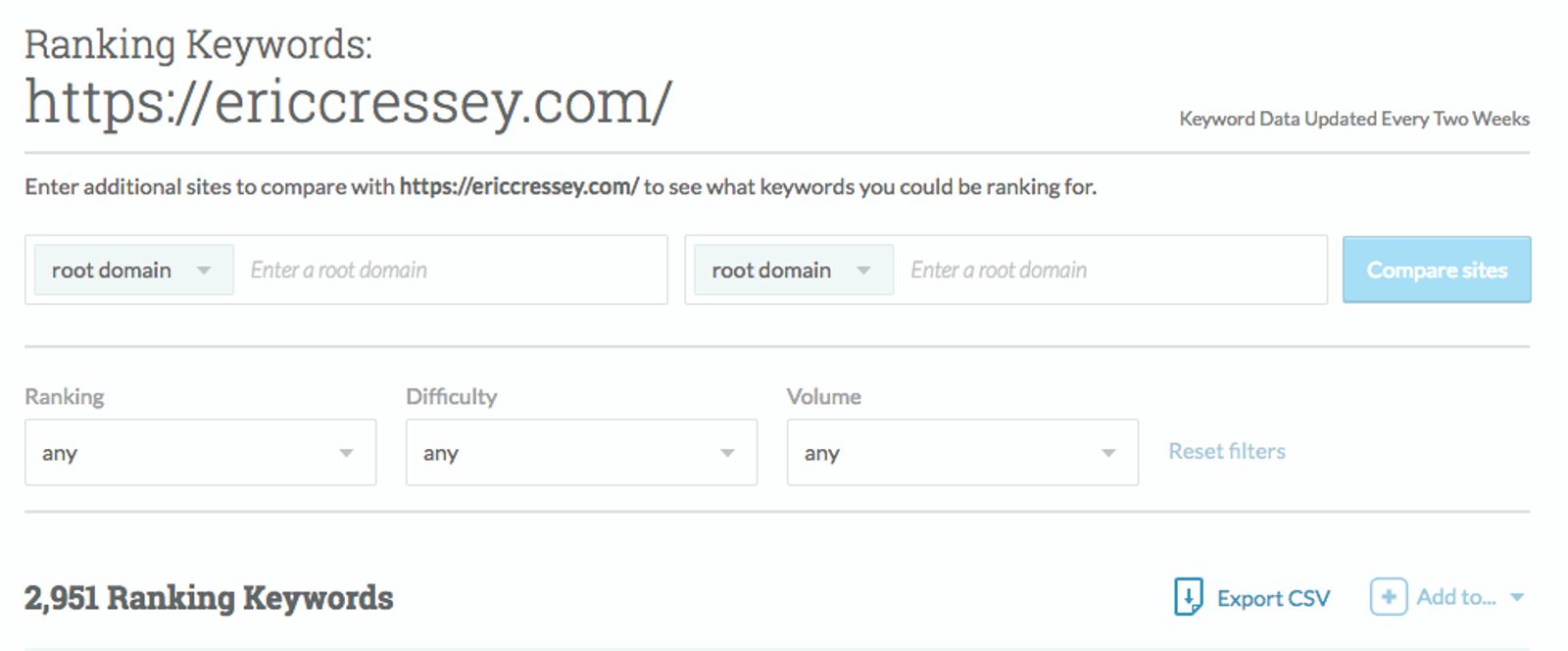
Because so few people share expert-level content, Cressey is able to rank for thousands of specific keywords.
The other secret to Cressey’s success? Relationships.
Cressey’s site regularly features guest posts, and his relationships in the industry give him distribution of the content he writes himself.
Partnering with other coaches like Mike Robertson, Tony Gentilcore, and Dean Somerset has given Cressey’s content marketing more authority and reach.
2. Orbit Media Studios

Orbit Media Studios is a web design agency based right here in Chicago. But through content, it extends its reach much farther.
Orbit Media primarily serves organizations that are based in Chicago. Much of their business comes in through Google searches—so you can imagine how important it is for them to rank for important keywords like “Chicago Web Design.”
How can a small company with 1.5 marketers rank on such competitive terms? Content marketing.
By creating compelling content and building relationships with content marketing influencers, Orbit Media is able to attract a lot of links back to their website.
This, in turn, raises the overall profile of their site—and allows them to rank for the competitive terms that actively bring in business.
How can you do content marketing like Orbit Media Studios?
You’re in luck! Orbit Media Studios writes content about...how to do content marketing!
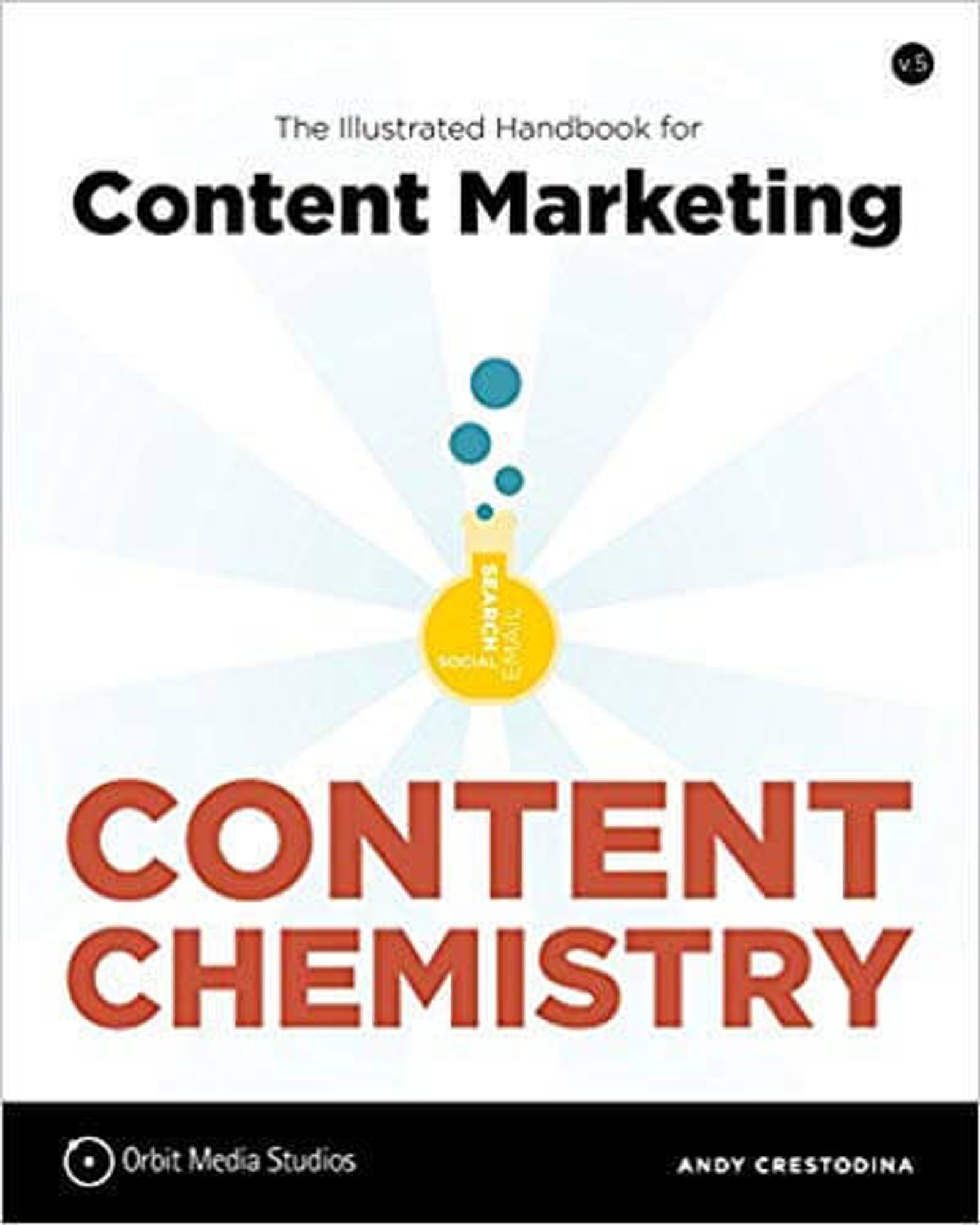
If you want to do content marketing like Orbit Media, look no further than the Orbit Media blog. Unless you look to the book Content Chemistry, by Orbit co-founder Andy Crestodina.
Source: Amazon
Both sources of content marketing advice have tons of examples, step-by-step content distribution processes, and SEO advice.
But here’s the quick rundown of Orbit Media’s approach:
- Search scales best, so focus on search engine optimization
- Create the best page on the internet for your topic
- Build relationships to help promote your content
- Rank for the money phrase
Orbit Media is a web design agency—not a content marketing agency. There are only 1.5 marketers at Orbit, so the agency needs to be extremely efficient in its marketing.
Enter: search engine optimization.
Traffic from Google has a few advantages over other sources of traffic:
- It’s highly relevant to a target keyword
- There’s a lot of it to go around
- It lasts for a long time—and even grows
But it’s hard to rank in Google as a small website. So what does Orbit Media do?
Orbit starts by creating the best page on the internet for target key phrases related to content marketing, web design, and SEO. By creating long-form content to answer every question on a narrow topic, Orbit can increase the chances of a post ranking—and attracting links.
To get more links, Orbit works with influencers.
Orbit Media blog posts tend to feature influencer quotes. Because they’ve contributed quotes, and are content creators themselves, influencers are more likely to send backlinks to the Orbit Media website.
What about leads though? How does SEO get more business?
The increased number of links increases Orbit Media’s Domain Authority, or ability to rank in Google.
That means it can rank for “money phrases” like “Chicago web design.”
These are the phrases potential customers search—and Orbit is right there at the top of search results.
3. Imperfect Produce
Imperfect Produce is a company that fights food waste by selling the produce that’s too “ugly” to be sold in supermarkets.
By sourcing “ugly” produce directly from farms, Imperfect Produce is able to deliver to customers for 30-50% less than grocery store prices.
It’s a pretty sweet deal (the kiwis I got last week were delicious)—but how can such a small company raise awareness and get customers?
The answer is that Imperfect Produce absolutely crushes their content marketing and social media game. That content, combined with the fact that the concept of the service is excellent, spurs traffic, word of mouth,and referrals.
On their blog, Imperfect Produce provides helpful content that teaches people how to cook with many of the vegetables they offer. Blog posts include topics like “How to Fall in Love with Bok Choy” and “4 Seasonal Squashes and What to Do With Them.”
They also include articles like “Composting 101,” correctly guessing that people interested in reducing food waste are also into things like composting.
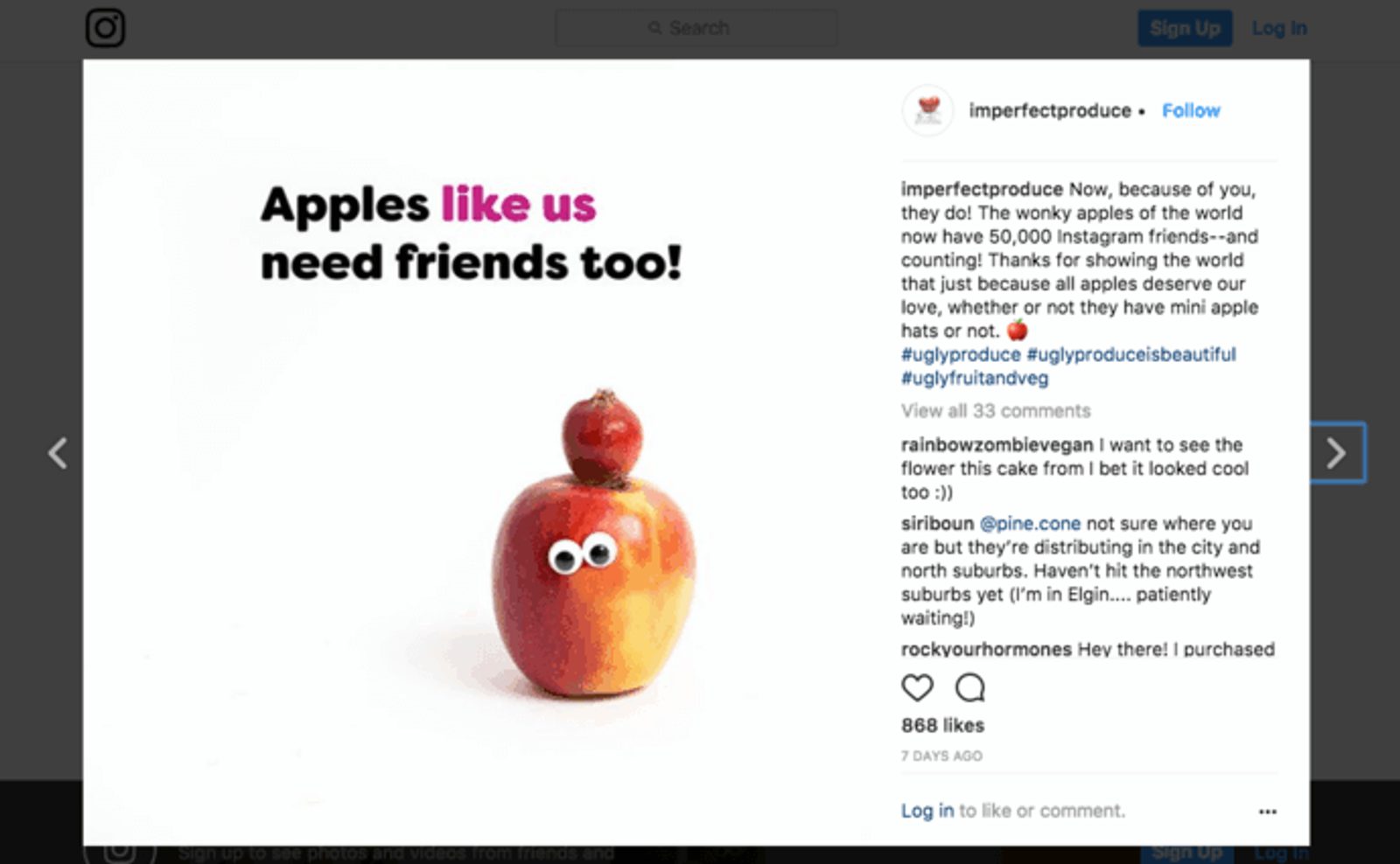
But the real star is Imperfect Produce’s fantastic presence on Instagram.
There are tons of funny, personality-filled posts. Together, all of these things have combined to help Imperfect Produce take off.
How can you do content marketing like Imperfect Produce?
Imperfect Produce is a fun example of content marketing because...it produces fun content!
A ton of content out there is boring. Imperfect Produce could certainly have gone the traditional route, by talking about the benefits of preventing food waste and playing up their value proposition of cheap groceries delivered to your door.

And they do talk about those things eventually. But first, their content is fun.
Imperfect Produce knows that their product looks a little wonky. So they steer into the skid—they double down by making funny Instagram posts that get shared and make people laugh.
It helps that Imperfect Produce has an almost no-brainer product.
If you’re in an area they serve, why wouldn’t you sign up for the service?
The groceries are cheaper, they’re delivered, and you help prevent food waste. The challenge to solve is awareness not interest or conversion.
After someone becomes a customer, there’s content for them too.
Do you know how to cook bok choy, or the difference between 4 types of squash? Even if you’re committed to preventing food waste (or just don’t like grocery shopping), you might quit the service if you don’t know how to cook what you get.
So that’s the kind of content Imperfect Produce produces (pun absolutely intended). Recipes.
The tone is still fun, but this practical content makes sure that customers know how to use their new, funny-looking fruits and veggies.
4. River Pools
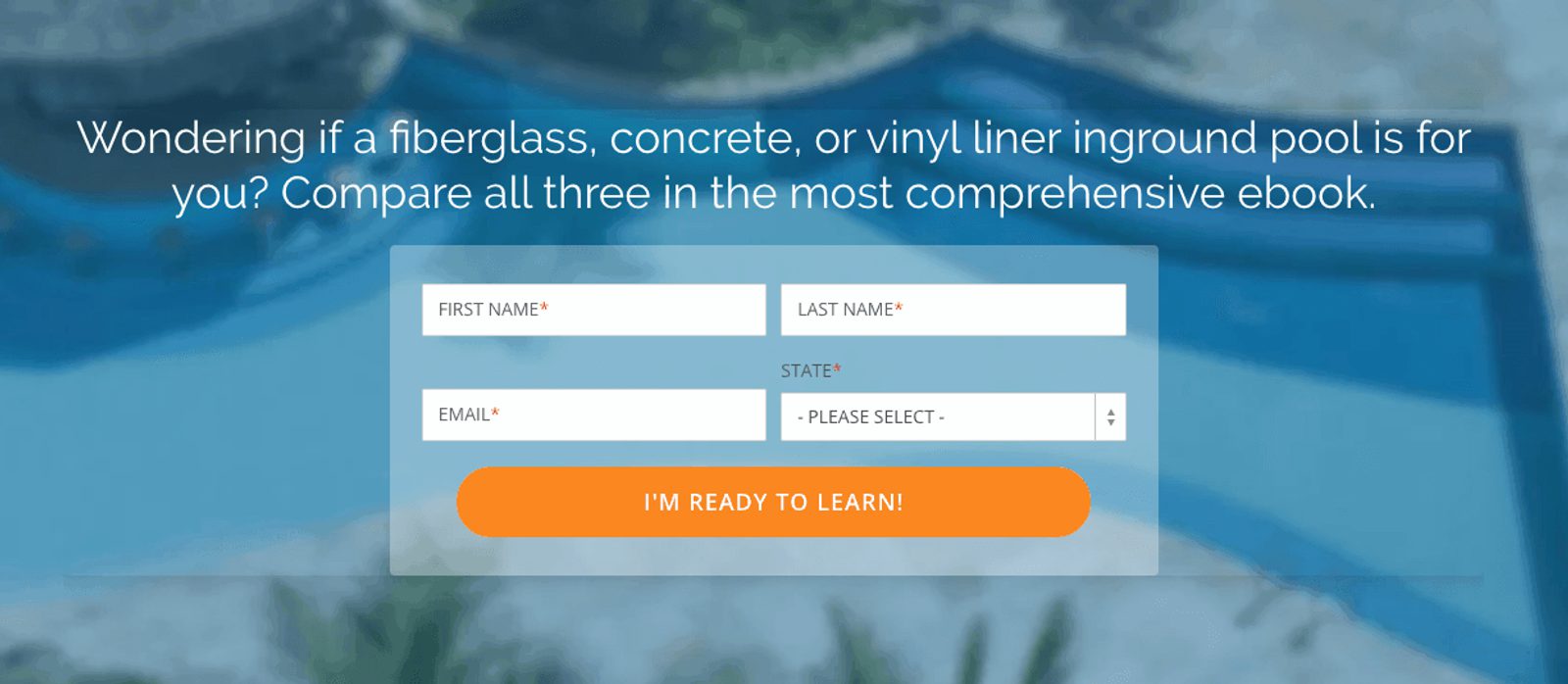
River Pools is one of the classic content marketing examples.
Struck hard by the recession in 2008, River Pools was in trouble. People just weren’t that interested in installing inground fiberglass pools.
The whole pool industry was having trouble. And then Marcus Sheridan, the owner, decided to try blogging.
He started simple. River Pools had lots of experience installing fiberglass pools, so he focused his content around that expertise. What questions did potential customers need answered before buying a pool?
Although he started small, the River Pools website quickly expanded. Today he claims that “we literally answer every question a consumer could possibly have about buying a fiberglass pool.”
With the influx of traffic and a list of satisfied readers, River Pools more than survived the recession—it thrived.
How can you do content marketing like River Pools?
Marcus Sheridan basically hands you the secret to content marketing when he says “we literally answer every question a consumer could possibly have about buying a fiberglass pool.”
That’s a content marketing strategy on its own!
Especially in niche industries, answering every question can be a great approach to content marketing. But by now you probably have a question of your own…
...how do you know what your audience is asking?
Here are three ways you can uncover questions that need answering.
- Keyword research tools
- Online market research (review mining, and other tactics)
- Customer interviews
Keyword research tools are a useful way to uncover questions because they tell you what people are searching for. And if people are searching for something, you have a chance to attract traffic.
A free tool like Ubersuggest is a great way to uncover keywords that get a lot of searches. Paid tools like Moz and Ahrefs have similar functions, with the added benefit of telling you how hard it is to rank in Google for those keywords.
When you’re looking for questions to answer, Answer the Public is another great, free keyword research tool.

Enter a phrase like “fiberglass pools,” and you’ll get every question that people are asking on the internet.
Keyword research tools are useful because they tell you what people are searching for.
But for some topics, what people search for isn’t really what they need to solve their problems. Or the problem itself is hard to define, and there’s no one search term that everyone is searching.
That’s why there’s no substitute for market research and customer interviews.
What to know what to write about? Just ask your customers.
Customer research is the best way to uncover audience questions—and content topics. When you get questions from your customers, turn those questions into content.
We put together a guide to online market research, and some specific customer research questions worth asking. If you have a sales or support team, asking them about common questions can also give you content marketing ideas.
5. MobilityWOD

If you had told me I would one day purchase a book called “Becoming a Supple Leopard,” I would have called you a crazy person.
And yet, because of physical therapist Kelly Starrett’s investment in content marketing, I eventually did buy that book (and enjoyed it). I even bought his third book, Deskbound, and regularly consume the content on his site MobilityWOD.com.
Kelly Starrett started out by opening up a CrossFit gym in 2005. After becoming a Doctor of Physical Therapy, Starrett began to teach mobility seminars—and in 2010, he began posting daily mobility videos to spread his advice even farther.
They kinda went viral.
The result? Starrett still has San Francisco CrossFit, but he and his wife Juliet also run a thriving online brand and membership site. Despite its unusual name, Becoming a Supple Leopard became a bestseller.
By posting informative, expert videos on how to cure common aches and pains—in his fast-talking, intriguing personal style (which keeps them interesting)—Starrett was able to build a large audience and boost the profile of his business.

What I love about this example is that it shows how content is a long-term strategy. Starrett started posting daily videos in 2010—and though he saw a bump in profile quickly, his business didn’t really explode until 2013.
Valuable content published in a consistent format over a long period of time is a winning strategy for small businesses.
How can you do content marketing like MobilityWOD?
There are a lot of lessons you can take away from this example of content marketing.
Kelly Starrett is a subject matter expert, and his content reflects that. If you try out his mobility tricks, you often feel better instantly—which makes you much more likely to try out more of his content.
Starrett also has a big personality, and he’s chosen a medium (video content) that highlights that personality effectively.
So we’ve already got a bunch of content marketing lessons:
- Be a subject matter expert
- Deliver content that gets results instantly
- Showcase an interesting personality
But what stands out most about MobilityWOD is the consistency of content production. MobilityWOD started out by posting content every single day for a year.
Even though the production quality was low.
Even though the audience started small.
Even though Starrett was sometimes literally interrupted by his young children walking through the shot.
Kelly Starrett’s content was good, and it filled a need that was missing on the internet. It brought the knowledge of a Doctor of Physical Therapy to the masses—in a way that stayed interesting and entertaining.
A small child wandering through the shot? Well, everyone watching the video knew that Starrett was a human with a real personality. Look at comments on YouTube, and you’ll see that people actually liked the interruptions.
If you’re worried that your production value will be too low in the beginning, don’t.
Focus on making your content good. Focus on filling a gap. Focus on appealing to an audience and publishing consistently.
As MobilityWOD grew, the production quality of its videos improved.
But it grew because Starrett wasn’t afraid to publish good content in a rough package.
6. Strolleria

Strolleria is the content marketing example that proves you can use content to promote just about anything. Brick and mortar store that sells baby strollers? No problem.
With a physical location in Scottsdale, Arizona and an online store that helps spread its reach, Strolleria epitomizes small business content marketing.
It also proves that—unlike the massive budget content marketing examples you may have seen—content doesn’t need to be fancy to be effective.
If you’re a new parent trying to choose a stroller, wouldn’t you appreciate a stroller buying guide?
Better yet, wouldn’t it be great if there were a quiz that could match you with the best stroller for your needs?
What if you’ve heard good things about both the Bugaboo Fox and Bugaboo Cameleon, and need to compare them?
Strolleria’s blog solves all of those problems. For people who need to choose a stroller or car seat, Strolleria provides fantastic information—and who do you think those readers are going to turn to when it’s time to make a purchase?
How can you do content marketing like Strolleria?
How do you use content marketing for ecommerce? Look no further than Strolleria for an example.
Ecommerce businesses face a lot of challenges. The rise of Amazon and Google means that customers are doing more price comparisons and researching questions before buying. How does a small ecommerce company attract new customers?
Be the answer to questions.
Strolleria knows that people don’t just search the names of specific strollers. Granted, some people know exactly what they want, and it’s still worth doing product page SEO to capture those searches.
But most people buying a stroller don’t know the difference between an UPPAbaby VISTA and Nuna MIXX2.

What do those people want? Help.
That’s why Strolleria put together a long-form buyers guide on how to buy a stroller.
It’s also why they use their blog to post stroller comparisons. Once you’ve heard of two strollers, how do you decide between them? A blog post comparing the pros and cons of the UPPAbaby VISTA and Nuna MIXX2 would fit the bill.
The best content marketing lesson from Strolleria is that your buyers aren’t always searching transactional keywords. Going one step earlier in the funnel unlocks a whole new tier of keywords to rank for—and gives you access to buyers as they start their search.
7. Platinum Skin Care
Platinum Skin Care was able to get a 50% email open rate and 17% paid conversion rate with their lead magnets.
So why do I bring them up here? Because they have a really interesting approach to content that’s a bit different from the others on this list.
Do they have a blog? Yeah, and it gets updated periodically. They also have a YouTube channel with regular content, and a couple of their videos have even cracked 100,000 views.
But the real shining star of Platinum Skin Care is their email content.

When you visit the Platinum Skin Care website you can take a quiz that helps you find the right products for you skin type and specific needs.
Based on your results, you get customized product recommendations—this is already fantastic segmentation, and would work great on its own.

But then Platinum Skin Care takes things a step further, by sending a series of emails based on your quiz results.
Notice that only one of those emails is pushing for a sale. The others just provide helpful tips about how to manage acne—a major pain point that Platinum Skin Care products help solve.
The content of these emails is simple. Each email is just 300 to 1000 words about a specific question related to skin care.
But for someone looking for answers, this nurture sequence is really valuable content—and for Platinum Skin Care, it drives conversions and creates customers.
How can you do content marketing like Platinum Skin Care?
You can use content to fill the top of your marketing funnel. But a lot of people in the top of your funnel isn’t your goal—you want customers.
After you’ve attracted people to your website, you need to work on converting them into customers. And that’s what makes Platinum Skin Care such a great content marketing example.
People rarely just “sign up for newsletters,” so they offer a lead magnet.
A lead magnet doesn’t help you segment, so they used a quiz.
A quiz gives you information about what people want, so they follow up with an automation to offer it.
If you want to do content marketing like Platinum Skin Care (and get their 17% paid conversion rate), look for ways to segment your audience. If you can get your audience to tell you exactly what they want, all you need to do is give it to them.
Here are three common ways to segment:
- Use a “segmentation” email as your welcome email. Ask people to choose from three links related to specific interests, then tag them based on which link they click.
- Track people based on where they signed up. Which page did a contact come from? That page tells you something about their interests, and a tag lets you track them easily.
- Use a form or quiz. Platinum Skin Care used a quiz to tag contacts, but you can also just ask. Putting a custom field on your forms is the simplest way to get information.
Once you have a segment, you can automatically follow up to make an offer.
To market like Platinum Skin Care, think about how you can get more information about your audience. Then use that information to make offers your audience can’t resist.
Conclusion: What do you notice about these examples?
When you look at starting a content marketing program for your business, it’s easy to get intimidated. It’s easy to see the multi-thousand word articles, beautiful infographics, and massive campaigns and decide “that’s not something I can do.”
But what do you notice about these examples?
They’re all simple. There’s nothing about this content that you couldn’t do.
- Kelly Starrett started out by posting a video every day. Early videos were just him talking at a camera and demonstrating some exercises. Today’s videos are still that, but with slightly higher production quality.
- Eric Cressey uses a video on deadlifting technique as a lead magnet. He's been using the same video since 2011.
- River Pools built up a blog with tons of content, but they did it just by answering the questions that people were already asking them.
These small businesses didn’t need to put a massive investment behind content—content marketing might even have saved time in the long run, because people with questions could just be linked to existing articles.
Platinum Skin Care did the same. They added a layer to their content through segmented emails, but fundamentally they are still focused on answering questions.
Each of these businesses is a fantastic example of content marketing, but none of them did anything that you can’t do for your business.
Answer your audience’s questions. Do it consistently over time. Build a following for your company’s content, and you’ll see your company’s customer base grow.



